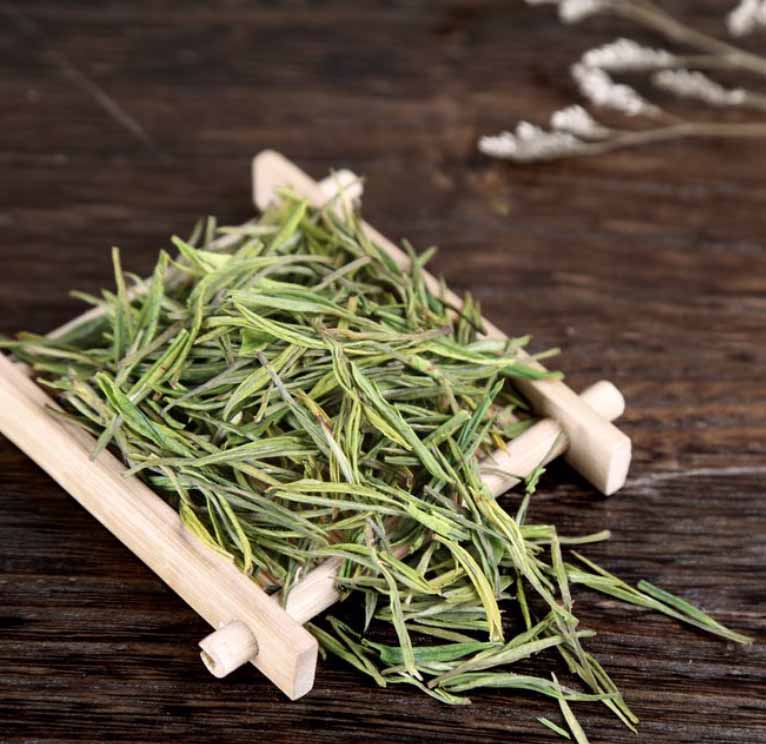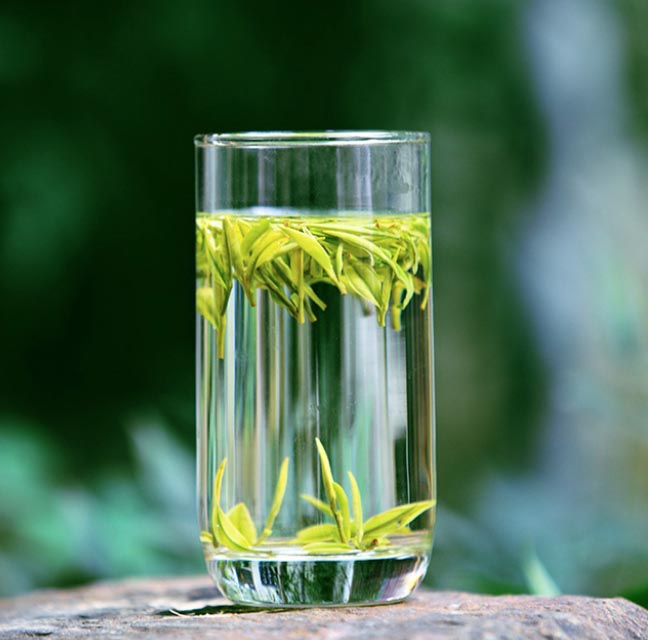Anji white tea is green tea, why is it called white tea ?
"Anji white tea" is green tea, why is it called "white tea"?
Anji white tea has good color, fragrance, taste, and shape. It looks like a phoenix feather, the leaves are jade white, the stems are emerald green, and it is fresh and sweet. It is a good tea. But because of the white tea in the name, many people think that Anji white tea is a white tea. Of course, some people say that it is green tea, so there are different opinions about whether Anji white tea is white tea or green tea.
The classification of tea in my country is distinguished according to the production process. The type of Anji white tea belongs to the category of green tea according to the production process, that is, after finishing, rolling, drying and other processes. Therefore, Anji white tea belongs to green tea.
Angie White Tea
Anji white tea is mainly produced in Anji County, Zhejiang Province. It was founded in 1980 and is not the same type of tea as "white tea" among the six major teas.
The picking time of Anji white tea is generally from mid-to-late March to mid-to-late April. The picking standard is jade white with one bud, one leaf and one bud and two leaves. The green tea processing technology is adopted, including: fresh leaf spreading, Finishing, arranging, rubbing, drying, spreading, drying and finishing.
As the amino acid content of Anji white tea is about one time higher than that of ordinary green tea, the dry tea made has a good freshness. At present, some tea companies use the Longjing tea method to process its raw materials into Longjing tea.
So, why is Anji white tea called "white tea"?
This is because the leaves of Anji white tea are tender and white at 22-24 degrees Celsius.
Anji white tea is a rare variant tea, belonging to the "low temperature sensitive" tea, with a threshold of about 23°C. Tea trees produce "white tea" for a short period of time, usually only about one month. Take Anji, Zhejiang, the place of origin, for example. In spring, due to the lack of chlorophyll, the buds that germinate before Qingming are white. Before Gu Yu, the color gradually faded, and most of them were jade white.
After the rain in the valley and before the summer solstice, it gradually turns into white and green flowers and leaves. In summer, the buds and leaves return to full green, just like ordinary green tea. It is precisely because the magical Anji white tea is picked, processed and made during a specific albino period, the bottom of the leaves of the tea after brewing will also show a jade white color, which is a unique characteristic of Anji white tea.

What are the effects of Anji white tea?
1, enhance resistance
Anji white tea contains double the amino acid content of ordinary tea, which is about 6.5%. Theanine can enhance the secretion of interferon in blood immune cells and improve the body's resistance.
2, improve memory
Anji white tea contains a variety of trace elements such as manganese, zinc, selenium, and tea polyphenols, which help improve memory and help brain damage.
3, anti-aging
Anji white tea contains a variety of amino acid complexes and diphenylamine in tea lipids, which can protect the liver and stomach, promote the synthesis of hemagglutinin in the liver, and have anti-aging effects.
4, protect eyes and improve eyesight
Vitamin C in Anji White Tea can reduce the turbidity of eye crystals, eliminate nervous tension, relieve fatigue, and protect eyes and improve eyesight.
5. Stability and tranquility
Often drinking Anji white tea can effectively eliminate nervous tension and calm the nerves; women who often drink Anji white tea can also relieve menstrual syndrome.
Therefore, Anji white tea is classified as green tea, not white tea. Anji white tea has high nutritional value, good taste, and good effects. It is a treasure among green teas.
Latest Articles - Teawiki
Why Is Kenyan Black Tea So Popular Around The World?
Kenya is the world's largest exporter of tea. 450,000 tea farmers work hard throughout the four seasons on 186,000 hectares of tea gardens, contributing 1/10 of the world's tea - 400,000 tons of black tea every year. Nearly half of the black tea consumed in the UK comes from Kenya.
Golden Royal Chrysanthemum
Golden Royal Chrysanthemum, a kind of scented tea, is referred to as Royal Chrysanthemum, also known as Nine Immortals Royal Chrysanthemum. It originated from Xiabao Village, known as Little Shangri-La, located in Fengxin County, northwest Jiangxi. Fengxin County has a subtropical humid monsoon climate zone. Light, heat and water resources are relatively abundant, the frost period is relatively short, and agricultural production conditions are relatively superior, which is very suitable for the growth of chrysanthemums
Is Gynostemma Pentaphyllum Tea Better With Seven Leaves Or Five Leaves
Each drink has its own benefits depending on the purpose of the drink.
Jiangxi Famous Tea - Zixi White Tea
Zixi white tea is a lightly fermented tea that belongs to the white tea category among the six major tea categories. Zixi white tea is made from the buds and leaves of extra-large pekoe, which are processed using a unique and precise method without kneading and frying. It has the characteristics of fresh taste, goose-yellow soup color, clear and bright, and sweet aftertaste.
